|
|
|
|
Research in the Sibener Group
The Sibener Group has research interests in the broadly defined categories of chemical physics and physical chemistry, surface and materials chemistry, polymer dynamics, nanoscience and water sustainability. Innovative use of sophisticated gas-surface scattering instruments and atomic-resolution scanning probe microscopes combined with appropriate theory and numerical simulations have led to advances in these areas of research. The unifying theme in the Sibener Group is to expand understanding of interfacial phenomena at the molecular level that spans fundamental knowledge discovery to applications such as energy systems. Specific areas of interest include: Surface reaction dynamics; gas-surface interaction potentials; phonon structure of surfaces and thin films; gas-surface collisional energy transfer; surface metallurgy and metallic oxidation; self-organization of molecular and polymer thin films including chiral systems; surface dynamics of polymers; superconducting radio frequency (SRF) materials for advanced accelerators; national security with focus on trace gas detection and chemical defense; water purification; ice chemistry in terrestrial and astrophysical environments; hierarchical assembly of functional nanomaterials for energy applications; and electronic and vibronic structure of nanoscale electronic interfaces. Examination of collective behavior in nanoparticle assembled materials studied at the single nanoparticle limit at cryogenic temperatures with scanning tunneling and conductive AFM spectroscopy is a recent addition to the program. Increasingly, studies in the group combine expertise in molecular beam scattering with scanning tunneling/atomic force microscopy visualization of dynamically evolving interfaces.
Surface Reaction Dynamics
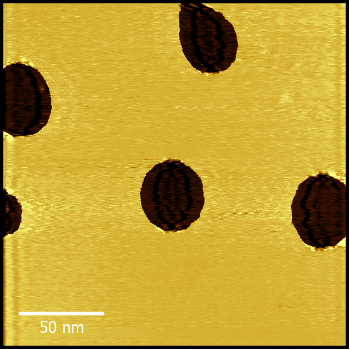
|
|
Visualization of surfaces by an in-line scanning tunneling microscopy (STM) provides morphological and kinetic data following exposure to a supersonic molecular beam. A unique pairing of STM and molecular beam has been used to study oxidation of surfaces following exposure to molecular oxygen with high translational energies (0.4-1.2 eV). This new and exciting instrumentation has recently demonstrated non-Arrhenius behavior in highly oriented pyrolytic graphite (HOPG) etching and explored two morphologically distinct, competing mechanisms for oxidation of GaAs(110). Current research aims to elucidate energy dissipation channels following N2 dissociative adsorption on Ru(0001).
|
|
Interfacial Phonon Structure
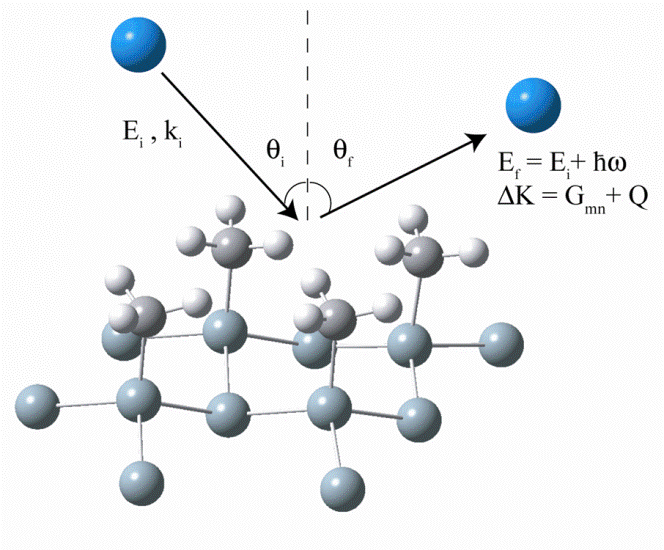
|
|
Single phonon inelastic He scattering is a surface sensitive method that can be used to map out the full surface phonon structure of clean or molecule-covered interfaces. Recent work has focused on new electronic interfaces, developed at Caltech, that have improved redox properties for electronic and electrochemical applications. Combined experiments and quantum/dynamics calculations have shown how molecular vibrations can hybridize with and modify the phonon band structure of methyl-Si(111) interfaces.
|
|
Gas-Surface Collisional Energy Exchange
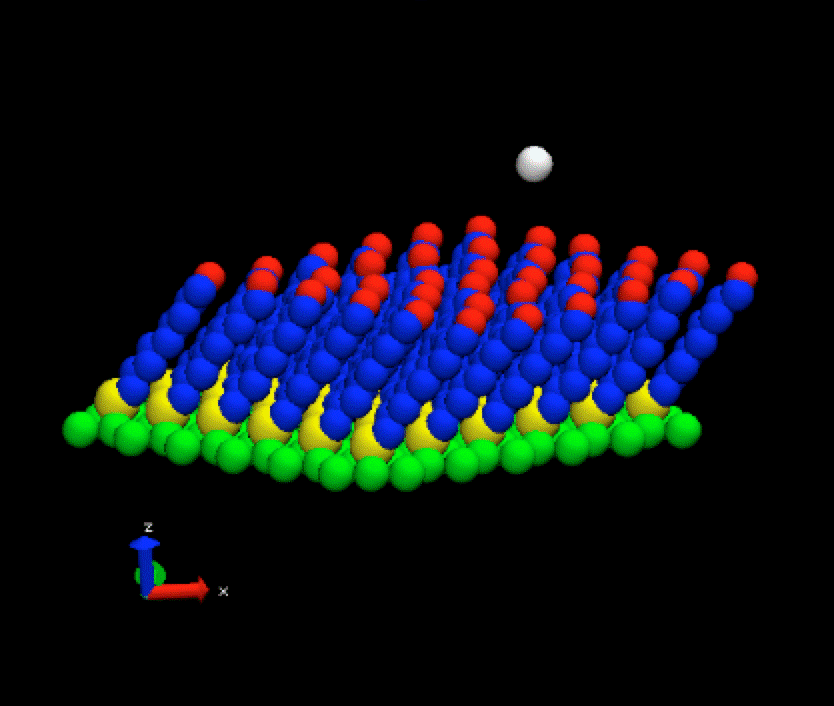
|
|
Studies of gas-surface collisional energy exchange have helped define understanding of the hierarchy of interfacial energy-exchange processes responsible for energy accommodation, sticking, and gaseous condensation. This work has quantitatively addressed how single, few, and multiphonon events contribute to energy exchange under an extraordinarily broad range of dynamical conditions. Illustrative examples include the scattering of heavy rare gases from self-assembled monolayers, where quantitative comparisons and beautiful agreement with large-scale molecular dynamics simulations have led to improved understanding of energy and momentum exchange at complex molecular interfaces. Such work is important for the refinement of advanced materials for use in advanced aircraft and spacecraft flight surfaces. Recently, work in this area has demonstrated that high-energy gas-surface collisions with SAMs can lead directly to penetration into the film followed by high-energy, directed re-emission, and that neutral species can be embedded into ice once energetic barriers are exceeded. These latter experiments are significant for many fields of endeavor, including trace gas collection and detection, climate change, and astrophysical chemistry involving planetary systems and comets.
|
|
|
Self-Organization of Polymer Thin Films and Chiral Molecular Systems

|
|
The dynamical properties and organization of molecular and polymeric thin films is another current focus of the group. Atomic force microscopy is being used to examine the pathways by which defects evolve and annihilate during the annealing of polymers. Recent work has led to the development of new methods, now widely adopted, for guiding the spatial organization of diblock copolymers in nano-confinement while achieving near structural perfection. Experiments being done at elevated temperatures above the glass transition where real-time/real-space dynamics for domain organization, grain boundary mobility, and defect elimination can be followed, revealing precise details of the mechanism and kinetics for polymer organization in thin films. In separate work on molecular systems, our current focus is on understanding and controlling the chirality of adsorbed films.
|
|
Surface Dynamics of Polymers
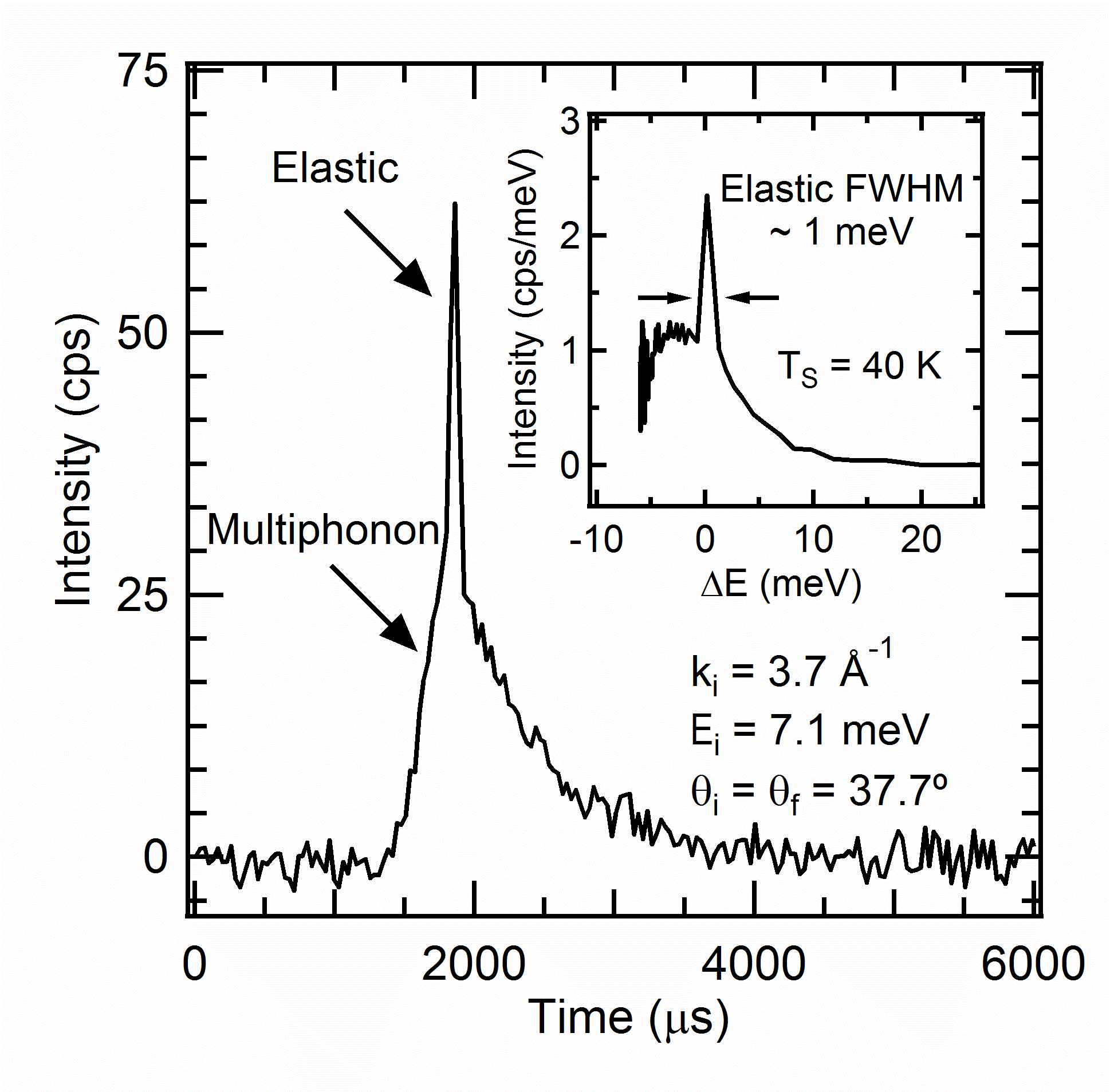
|
|
The Sibener Group has pioneered the use of low energy, non-destructive neutral atom inelastic scattering to probe the surface vibrational characteristics of polymer surfaces. This has proven to be a most incisive approach, revealing how polymer dynamics change due to nano-confinement as film thickness approaches the radii of gyration of the polymer chains. Helium scattering has also been used to assess how surface vibrational dynamics change when going from the amorphous to the complex crystalline phase of PET.
|
|
Ice Chemistry and Molecular interactions with Frozen Ice Films
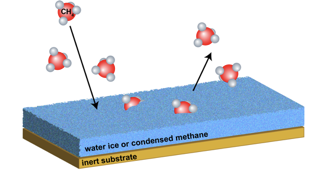
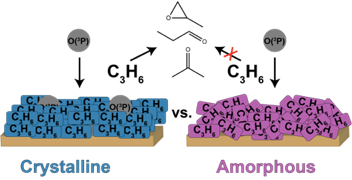
|
|
The research seeks to experimentally model surface-mediated processes occurring on icy-dust grains to develop a more complete understanding of the formation of planetary atmospheres, complex organic molecules, and origin of life in the universe. This work is done using a state-of-the-art ultra-high vacuum (UHV) chamber that mimics the low-pressure conditions seen in astrophysical environments with optics for in situ Reflection Absorption Infrared Spectroscopy (RAIRS). This chamber is connected to a molecular beam line that produces reactant gases with highly customizable energies for exposure onto the desired substrate. The goal is to understand how impinging molecules adsorb, react, or diffuse into frozen ice films as this is often a first step for reactions to occur resulting in new organic molecules essential for life.
|
|
Hierarchically Assembled Functional Nanomaterials and Directed Self-Assembly
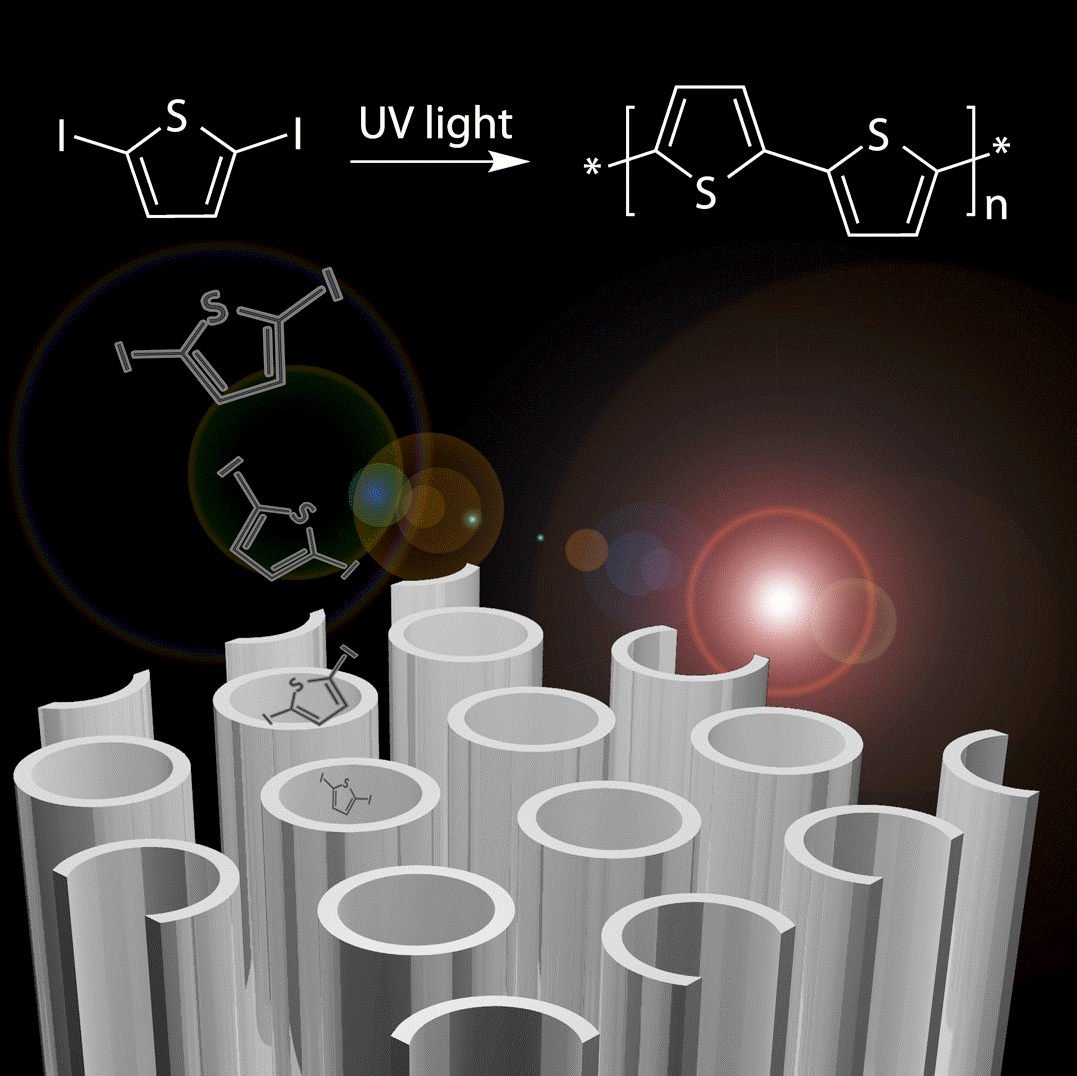
|
|
A powerful route for the creation of functional nanomaterials is hierarchical self-assembly. Here one can use top-down/bottom-up methods to organize complex structures that would be prohibitively time consuming to fabricate using traditional lithography-only paradigms. The group has been using such methods for the synthesis of functional photovoltaic thin film devices, ultra-high density magnetic systems involving magnetic nanoparticles, and highly efficacious surface enhanced Raman (SERS) substrates based upon the formation of aligned gold nanorod arrays templated by graphoepitaxially arranged diblock copolymer thin films. Such SERS active substrates hold promise for many applications, i.e. sensitive trace detection of environmental contaminants.
|
|
Supersonic Molecular Beam Epitaxy
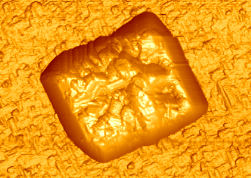
|
|
The use of reagent kinetic energy as a growth parameter during molecular beam deposition of cubic silicon carbide on Si(001) has been explored using supersonic beams of single source molecular precursors. The lessons from this experiment are being applied in an attempt to develop more efficient pathways for diamond growth. Other systems studied recently include graphene growth from ethylene or acetylene on transition metal surfaces such as Rh(111).
|
|
Biological Microscopy

|
|
Atomic force microscopy (AFM) was used as a novel approach to achieve enhanced characterization of the three-dimensional fine structure and topology of cocci from Staphylococcus aureus. To gain insight into the mechanism of resistance to vancomycin in recently emerging glycopeptide-intermediate S. aureus (GISA), strains were examined that were either susceptible or resistant to glycopeptides and/or methicillin.
|
|
Electrochemistry and Corrosion
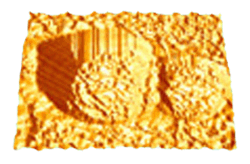
|
|
Additionally, in-situ atomic force microscopy has been used in our group to examine the corrosion chemistry of metals, including pioneering studies of how externally-applied stresses can modify the corrosion behavior of strategic metals such as Ni, Al, and Al-2024T3 alloy.
|
|
|
|
|
|
